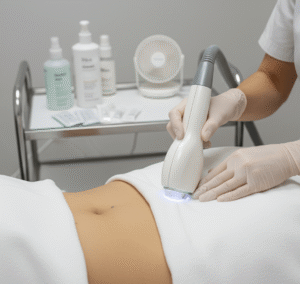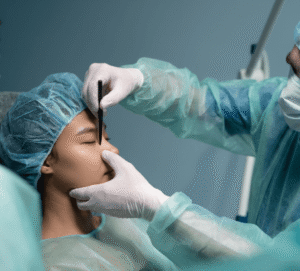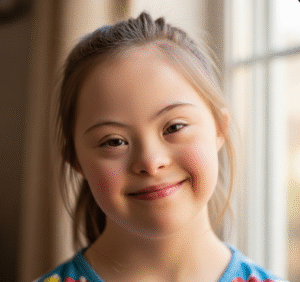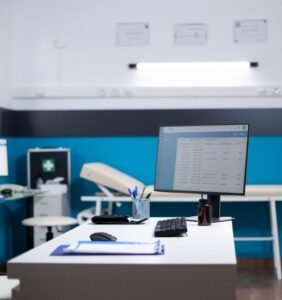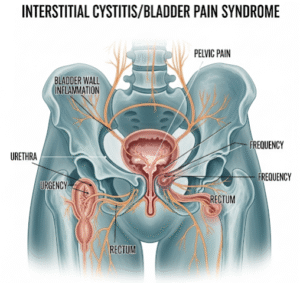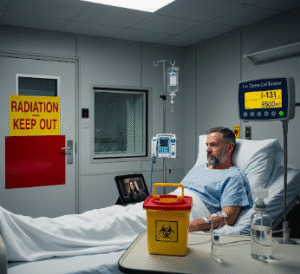What It Is
Defining Radiotherapy for Keloids
→ Radiotherapy for keloids is a specialized treatment that uses controlled doses of ionizing radiation to prevent keloid regrowth after surgical removal.
→ Keloids are notorious for recurring, sometimes even larger than before, when removed by surgery alone. Post-operative radiotherapy significantly lowers this recurrence rate by suppressing fibroblast overactivity and preventing excessive collagen production.
→ In Korea, radiotherapy for keloids is carefully performed in collaboration between dermatologists, plastic surgeons, and radiation oncologists, ensuring safe and effective outcomes.
Key Characteristics
- Applied immediately after surgical excision (within 24–72 hours)
- Uses low-dose superficial radiation targeted only at the scar area
- Reduces recurrence rates from over 50–80% down to 10–30%
- Considered one of the most effective long-term solutions for recurrent or severe keloids
Why It’s Done
Main Reasons for Referral
➡ High Recurrence Risk – Standard surgery often fails to control keloids without supportive therapy.
➡ Long-Term Control – Radiotherapy reduces recurrence and keeps scars flat.
➡ Improved Cosmetic Outcomes – Maintains smoother skin and prevents thick scar formation.
➡ Patient Relief – Prevents itching, tenderness, and pain associated with recurring keloids.
➡ Combined Care – Works best as part of a multimodal approach with surgery, steroid injections, and silicone therapy.
Alternatives
Non-Medical Options
- Silicone Gel or Sheets – Effective for prevention but less reliable in aggressive keloids.
- Compression Therapy (Pressure Earrings) – Useful for ear keloids, though limited for other areas.
Medical Alternatives
→ Instead of radiotherapy, patients may try:
- Intralesional Steroid Injections → Reduce scar bulk but require repeated sessions
- 5-FU Injections → Effective in fibroblast suppression, sometimes combined with steroids
- Laser Therapy → Improves redness and texture but doesn’t prevent recurrence alone
- Cryotherapy → Suitable for small lesions, less effective for large keloids
- Surgical Excision without Radiotherapy → Higher recurrence risk unless combined with other methods
Preparation
Before Referral
➡ Multidisciplinary Consultation – Patient meets both a dermatologist/plastic surgeon and a radiation oncologist.
➡ Medical History Review – Past treatments, skin type, scar characteristics, and radiation sensitivity are evaluated.
➡ Informed Consent – Patients are educated about radiotherapy benefits, risks, and expectations.
➡ Timing Plan – Surgery is scheduled with radiotherapy arranged within 24–72 hours post-excision.
➡ Skin Readiness – The surgical site must be properly closed and clean before radiation is applied.
How It’s Done
The Radiotherapy Process
Step 1: Surgical Excision
→ The keloid is surgically removed by a dermatologist or plastic surgeon.
Step 2: Referral to Radiotherapy
→ Patient is referred immediately to a radiation oncology unit.
Step 3: Planning and Shielding
→ Radiation oncologist maps the scar site and ensures nearby healthy tissue is shielded.
Step 4: Delivery of Radiation
→ Low-dose superficial radiation is delivered directly to the scar site.
- Usually electron beam or superficial X-ray therapy
- Sessions are short, lasting only minutes
Step 5: Course of Treatment
→ Most protocols involve 1–3 sessions depending on keloid size and location.
Step 6: Follow-Up Care
→ Steroid injections, silicone sheets, or pressure therapy may be added for enhanced prevention.
Recovery
Immediate Recovery
- Mild redness or swelling at the treatment site
- Temporary tenderness, similar to a mild sunburn sensation
- Normal activities can usually resume immediately
Long-Term Recovery
→ The surgical scar heals normally, but with lower chance of recurrence.
→ Patients may notice smoother skin and reduced itching over months.
→ Long-term follow-up ensures scars remain under control.
Complications
Possible Risks
- Skin Pigmentation Changes → Temporary darkening or lightening around treatment site
- Delayed Wound Healing → Rare, more likely if radiation dose is too high
- Radiation Sensitivity → Mild irritation similar to sunburn
- Theoretical Cancer Risk → Extremely rare with low superficial doses, especially when targeted only at scar tissue
- Recurrence → Even with radiotherapy, recurrence can still happen in 10–30% of cases, though usually smaller than original keloid
Treatment Options in Korea
Advanced Radiotherapy Practices
South Korea has some of the world’s most advanced oncology and dermatology facilities, making radiotherapy for keloids widely accessible and highly refined.
Why Korea Excels in Radiotherapy for Keloids
➡ Specialized Collaboration – Close teamwork between dermatologists, plastic surgeons, and radiation oncologists
➡ Modern Equipment – Clinics use advanced linear accelerators and superficial radiation units for precision
➡ Low-Dose Safety Protocols – Focus on minimizing risks while maximizing scar control
➡ Combination Therapy Approach – Radiotherapy is routinely paired with steroid injections, silicone gel, or pressure earrings for optimal results
Popular Uses in Korea
- Earlobe Keloids → Especially after piercings or cosmetic surgeries
- Chest and Shoulder Keloids → Common sites prone to recurrence
- Surgical Scar Keloids → Managed post-operatively with immediate radiation
- Recurrent Keloids → Cases where steroids and other treatments have failed
Patient Experience in Korea
- Referrals are usually seamless, with surgery and radiotherapy scheduled in tandem
- Radiation sessions are quick, painless, and outpatient-based
- Patients receive detailed aftercare guidance including sun protection, scar gels, and follow-up monitoring
- Korean clinics place strong emphasis on comfort, cosmetic outcome, and recurrence prevention
Conclusion
Radiotherapy referral for keloid treatment in Korea is one of the most reliable methods for preventing recurrence after surgical removal. By combining surgery with low-dose targeted radiation, recurrence rates are dramatically lowered, ensuring flatter, smoother scars.
Korea’s integrated approach, combining surgical expertise, advanced radiotherapy, and supportive scar care, makes it one of the leading destinations for effective keloid management. For patients struggling with recurrent or resistant keloids, radiotherapy in Korea provides a safe, advanced, and long-lasting solution.



